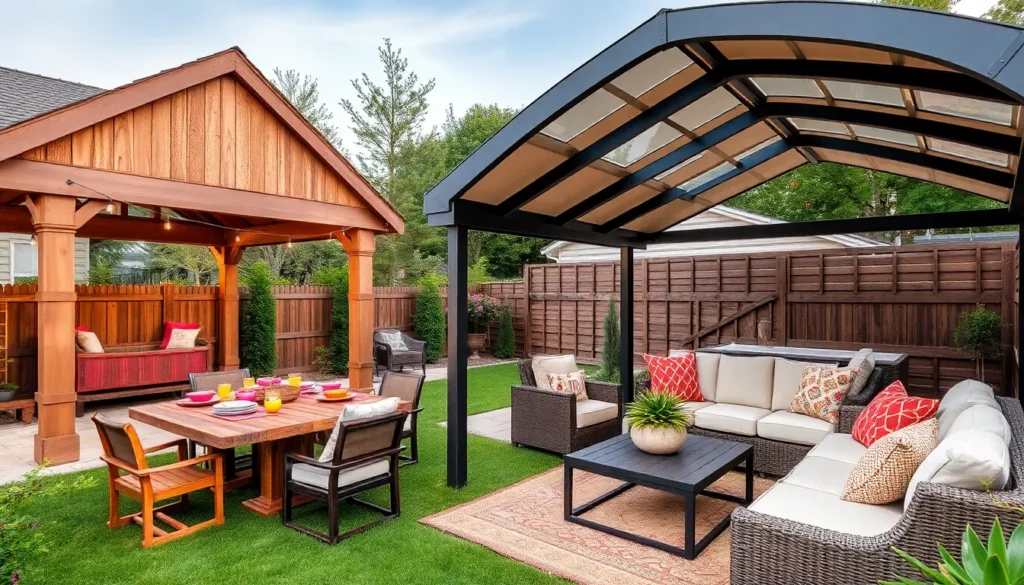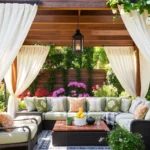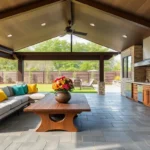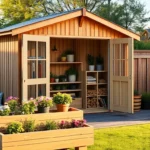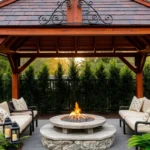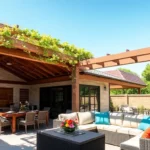Picture yourself basking in the glow of a late afternoon sun, comfortably shaded under a perfectly designed patio roof that complements your home and lifestyle. Whether you’re a seasoned DIY enthusiast or just dipping your toes into the world of outdoor design, creating a seamless indoor-outdoor transition can transform your living space into a personal oasis. A well-chosen patio roof not only enhances the aesthetic appeal of your home but also boosts its functionality, providing shelter from the elements and extending your living area into the great outdoors.
In this article, we’ll explore six diverse patio roof design options that cater to every taste and architectural style, offering practical insights to help you make an informed decision. From minimalist pergolas to robust solid structures, you’ll discover the advantages of each design and how they can uniquely elevate your patio experience. Whether you’re dreaming of a cozy nook for quiet reflection or an expansive space for entertaining, this guide will equip you with the knowledge to create an inviting outdoor haven.
Classic Gable Roofs for Versatility
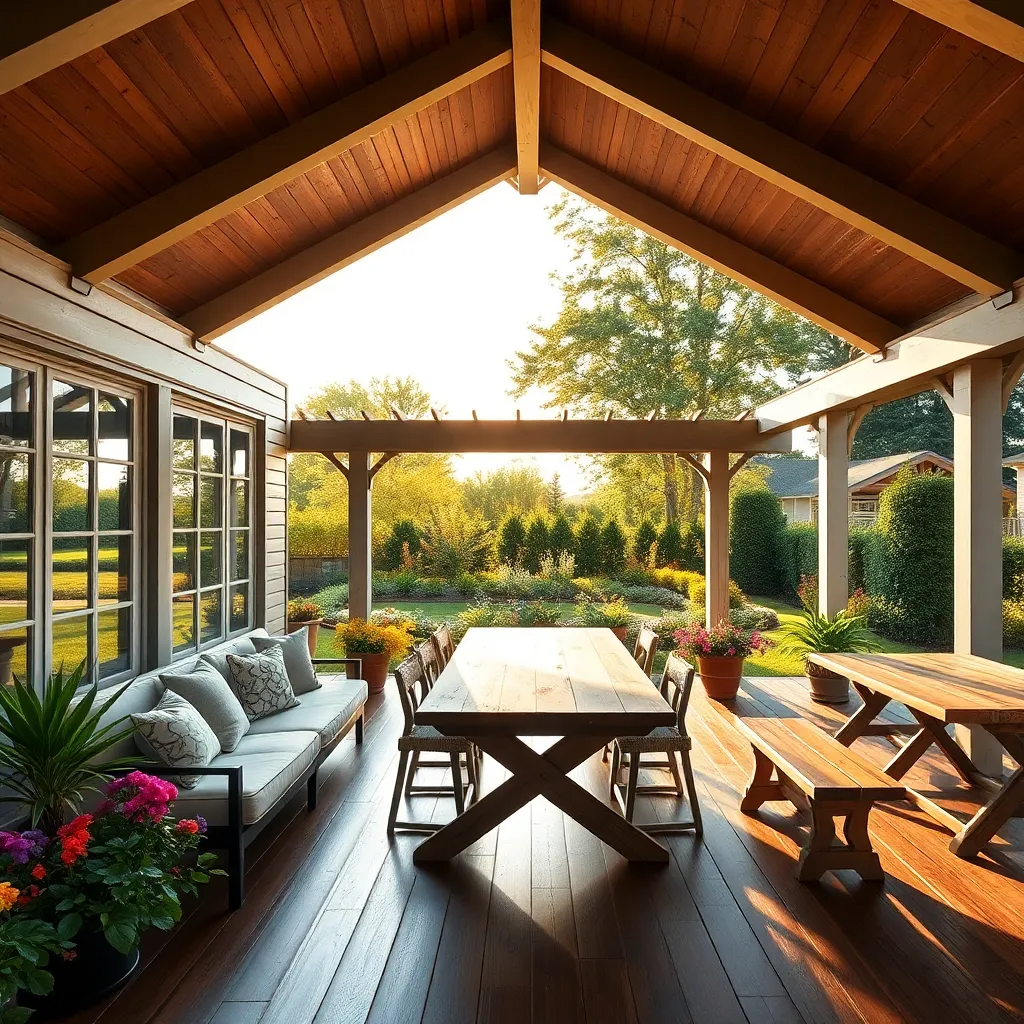
Classic gable roofs offer versatility and timeless appeal, making them a popular choice for patio shelters. The triangular shape not only adds architectural interest but also provides excellent water drainage, which is crucial for maintaining the integrity of your outdoor space. For construction, consider using treated wood for the frame to withstand varying weather conditions, and opt for polycarbonate panels if you want a modern touch that allows natural light while protecting against UV rays.
When designing your gable roof, ensure it complements the existing style of your home. A pitch of 4:12 is typically recommended for a balanced look, though adjusting the pitch can add unique character. For a more advanced touch, incorporate skylights or a ceiling fan to enhance the functionality of your patio. Installing a gutter system is also advisable to divert rainwater, keeping your patio area dry and comfortable. With these elements in place, a gable roof can transform any patio into a versatile outdoor retreat.
Modern Flat Roofs for Sleek Style
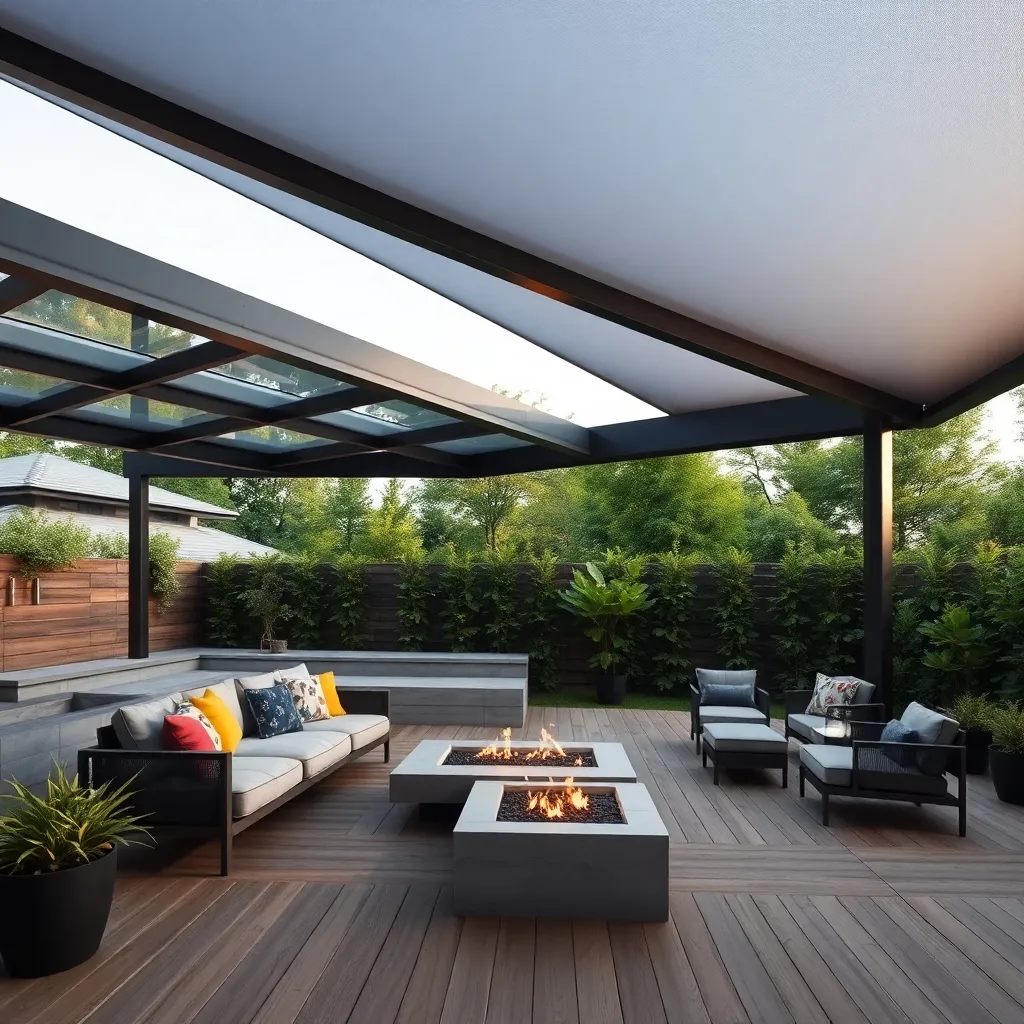
Opting for a modern flat roof can instantly give your patio a sleek, contemporary look. These roofs are not only stylish but also highly practical, offering easy maintenance and maximum space for additional features like solar panels. For construction, consider using durable materials such as metal or high-quality wood paired with water-resistant membranes to ensure longevity. While flat roofs generally have a minimal slope for drainage, make sure it is adequate to prevent water pooling, which could lead to damage over time.
When designing your flat roof, incorporate clean lines and a minimalist approach to enhance the modern aesthetic. To add some flair, consider integrating features like recessed lighting or a green roof with low-maintenance plants. Advanced DIYers can experiment with incorporating skylights for natural lighting or installing a gutter system with hidden downspouts for a seamless look. For a beginner, partnering with a professional can ensure the structure is both stylish and sturdy, bringing your modern patio vision to life.
Traditional Hip Roofs for Elegance
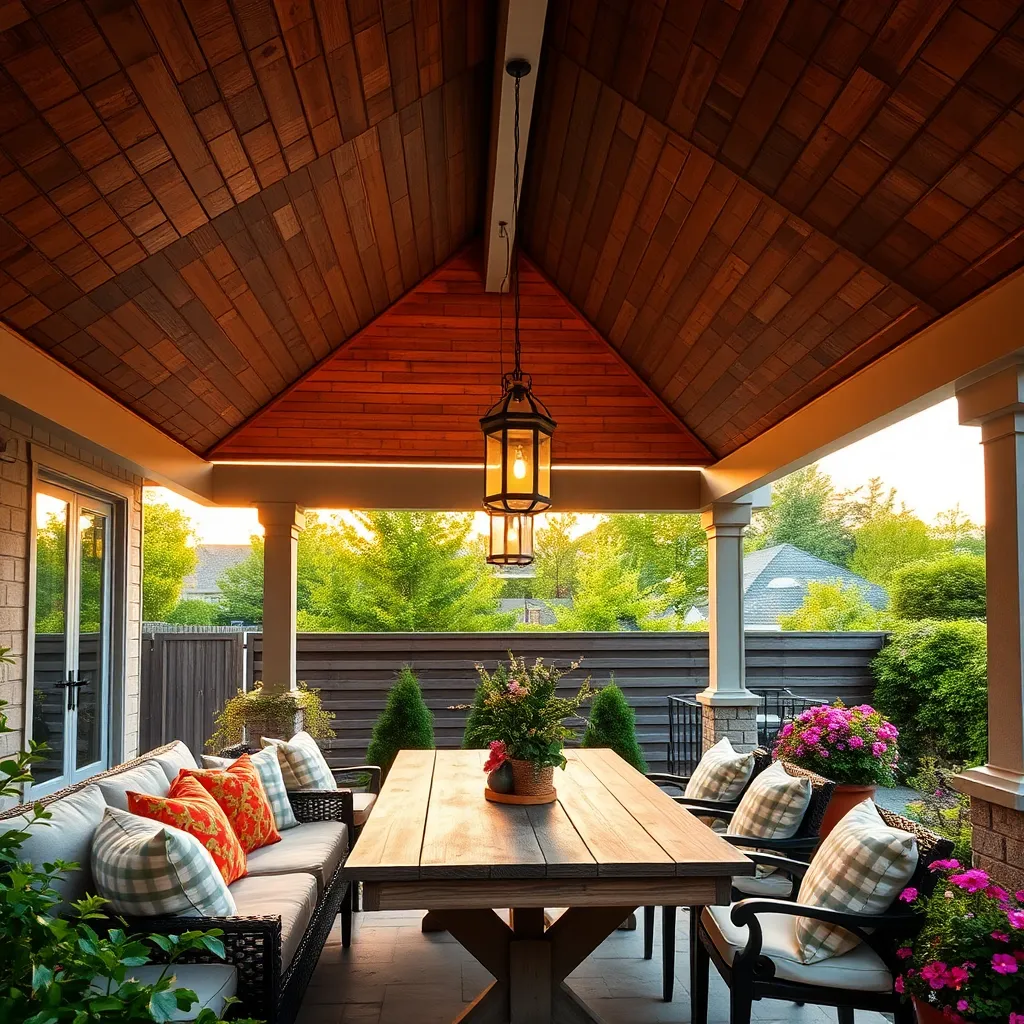
For those seeking timeless elegance, a traditional hip roof is an excellent choice for your patio. This design features a gently sloping roof that converges at the top, offering both aesthetic appeal and practical benefits. Constructing a hip roof requires careful consideration of materials like cedar or asphalt shingles, which provide durability and weather resistance. Beginners can start with a simple rectangular layout, while more advanced builders might explore adding decorative elements like exposed rafters or intricate woodwork.
Consider the angle of the slopes when planning your hip roof, as a steeper pitch can enhance water runoff, crucial for areas with heavy rainfall. Optimal dimensions depend on your patio’s size, but ensure the roof extends beyond the patio’s edges to shield against rain and sun. For a more refined look, incorporate fascia boards and decorative trim.
- Use pre-treated wood to prevent rot and decay.
- Opt for lighter colors for a cooling effect during summer.
With a bit of planning and creativity, your hip roof can transform your outdoor space into a sophisticated retreat.
Pergola Roofs for Light and Air
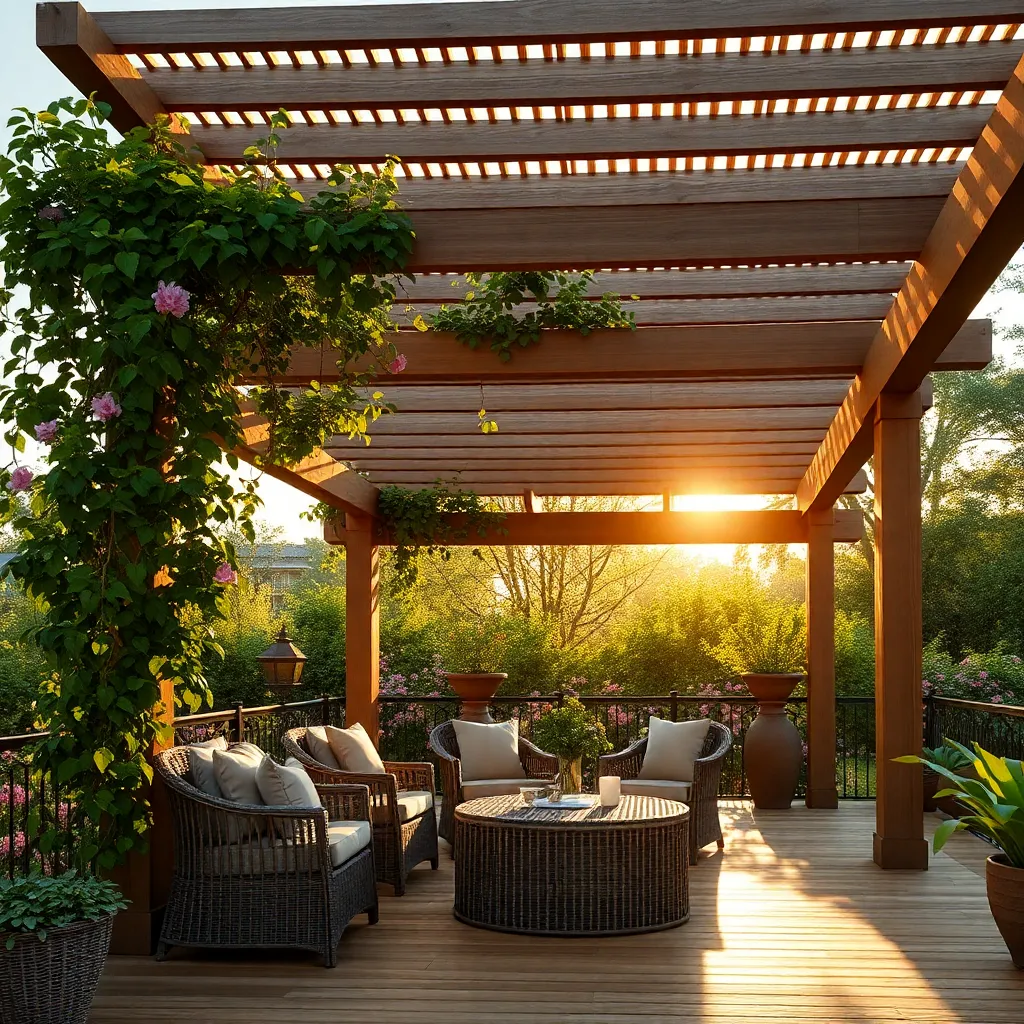
For those seeking a balance of light and air while enjoying their outdoor spaces, pergola roofs offer an ideal solution. These structures provide partial shade with their open lattice design, allowing you to enjoy the sun’s warmth without being directly exposed. Materials like cedar, redwood, or even aluminum can be used to construct a sturdy pergola, each offering unique aesthetic and durability benefits. Beginners might choose pre-made kits for easier assembly, while DIY enthusiasts can customize their pergola with features like adjustable louvers to control light and airflow.
Incorporating climbing plants such as wisteria or grapevines can enhance the natural appeal and functionality of your pergola. These plants provide additional shade and a lush, inviting atmosphere as they intertwine with the structure. For a more advanced touch, consider installing retractable canopies or weather-resistant fabric covers to shield against rain while maintaining air circulation. Keep dimensions in mind; a typical pergola should be at least 8 feet tall and proportionate to your patio area to ensure comfort and visual harmony.
Louvered Roofs for Adjustable Shade
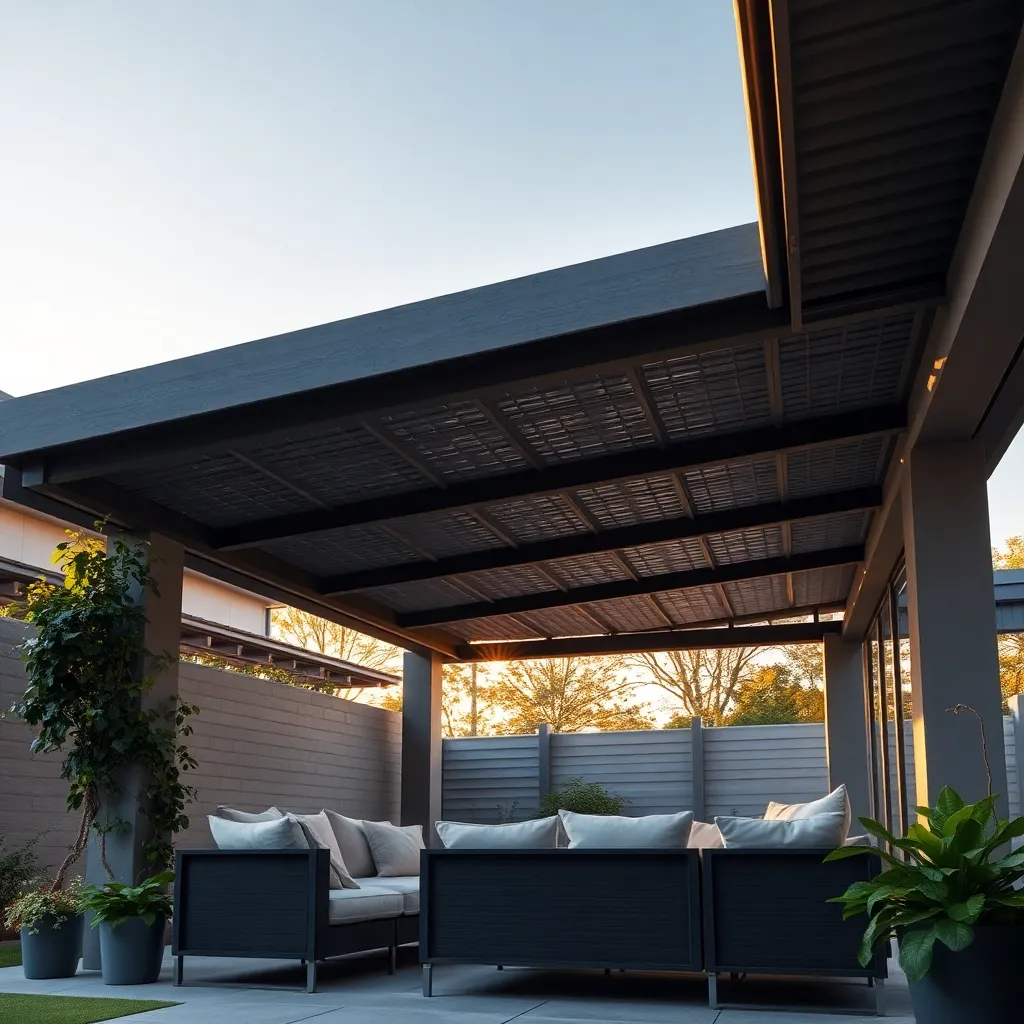
Louvered roofs offer an innovative solution for homeowners seeking adjustable shade and protection from the elements. These roofs consist of horizontal slats that can be tilted to control sunlight and airflow, making them perfect for patios where versatility is key. Aluminum is a popular material for louvered roofs due to its durability and low maintenance requirements, although wood and vinyl are also viable options for those looking for different aesthetics.
Investing in a motorized louvered roof system adds convenience, allowing you to adjust the slats with a remote for effortless control. For an advanced feature, consider integrating rain sensors that automatically close the louvers during a downpour, ensuring your patio stays dry.
- Ensure your design includes a slight pitch to facilitate water runoff.
- Consider a neutral or complementary color scheme to seamlessly blend with your home’s exterior.
These elements create a comfortable outdoor retreat that’s adaptable to any weather condition.
Green Roofs for Eco-Friendly Living

Embracing a green roof for your patio not only enhances aesthetics but also promotes eco-friendly living. Start by ensuring your patio structure can support the additional weight of a green roof, typically 15-30 pounds per square foot. Opt for lightweight, drought-resistant plants like sedum or succulents, which thrive with minimal maintenance. Use a high-quality waterproof membrane to protect the underlying structure from water damage, and consider integrating a drainage layer to facilitate proper water runoff.
For homeowners eager to dive into this project, consider using modular green roof trays that simplify installation and maintenance. These trays make it easy to swap out plants or address any issues without disturbing the entire setup. Advanced gardeners might explore irrigation systems or solar panels to further enhance sustainability. Remember, a well-planned green roof can significantly improve insulation, reduce stormwater runoff, and create a serene, natural retreat right above your patio.
Conclusion: Creating Beautiful Outdoor Spaces
In exploring the ‘6 Patio Roof Design Options for Every Home’, we uncovered key relationship insights: the importance of building a solid foundation, embracing flexibility, fostering open communication, the significance of creating shared spaces, nurturing individuality, and appreciating the beauty of simplicity. These concepts are not only pivotal in selecting the perfect patio roof but also in constructing a resilient and fulfilling partnership.
To take immediate action, consider discussing with your partner which design resonates most with both your lifestyles and aspirations. This conversation can strengthen your bond by blending practical needs with shared dreams.
Bookmark this article to revisit these insights whenever you need a reminder of how to harmonize your relationship dynamics. As you embark on this journey together, remember that success in relationships, like in design, is a continuous process of growth and adaptation. By remaining open and committed, you can create a sanctuary that reflects both of you.
Empower yourselves with this knowledge and take the next step towards a thriving relationship. Save this article now as your guide to both practical and emotional home building, ensuring your relationship flourishes for years to come.

